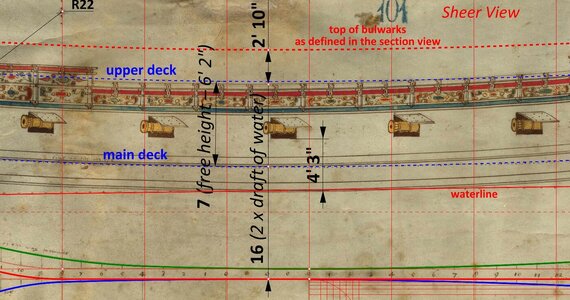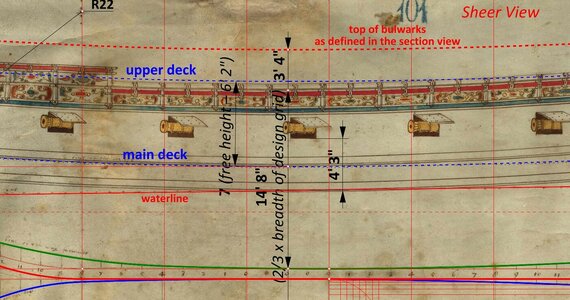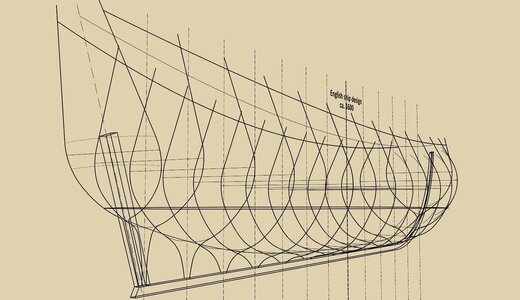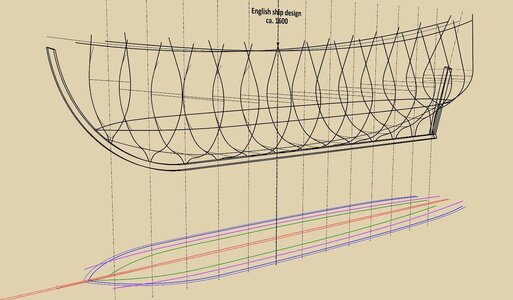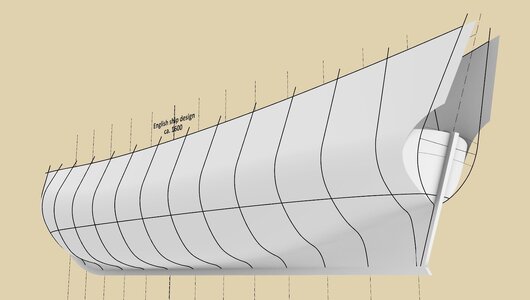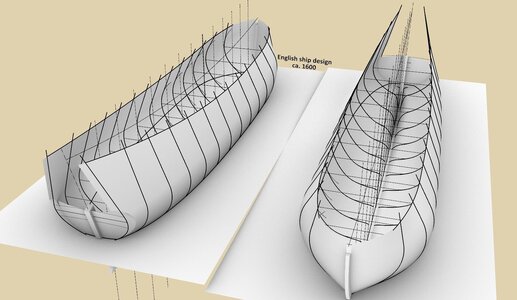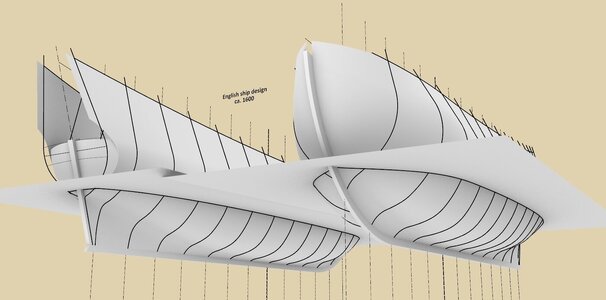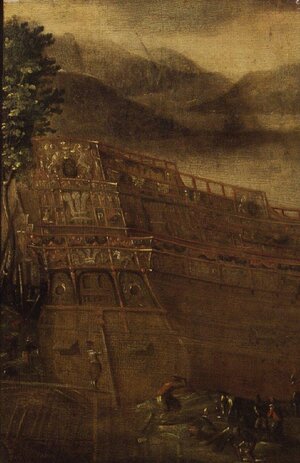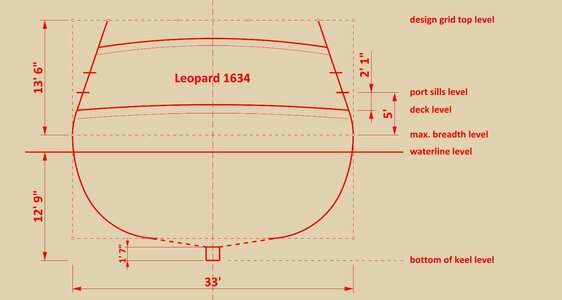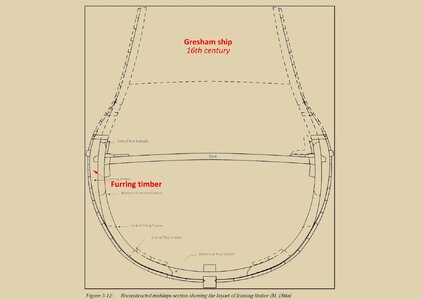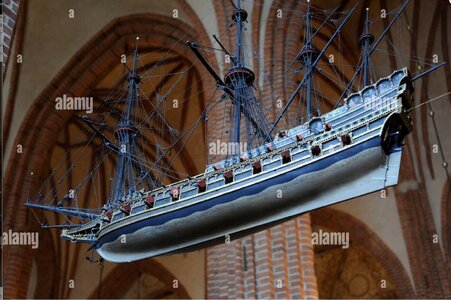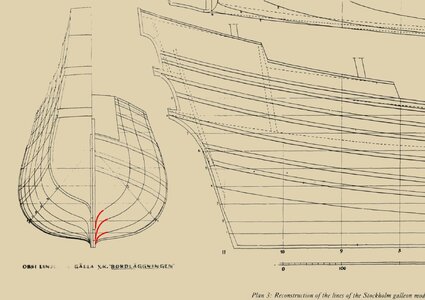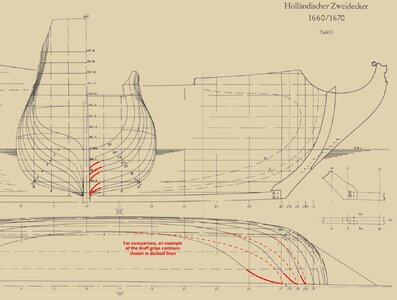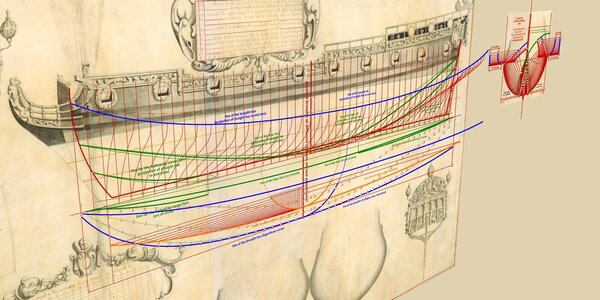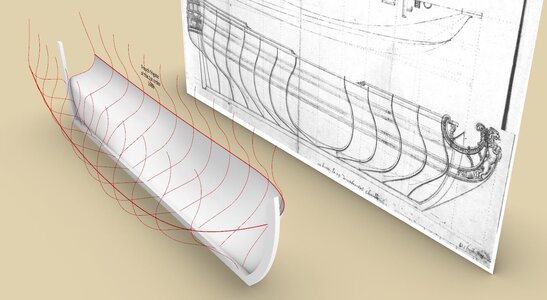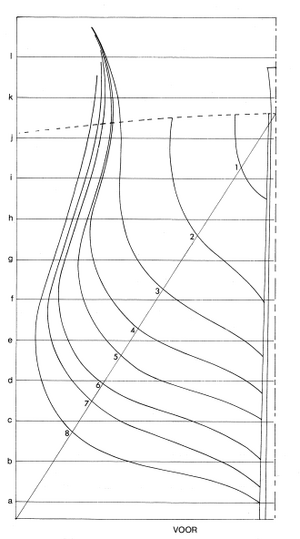.
Persuaded by Taras, who is closely observing and, as it were, keeping an eye on this project, I made an even more thorough inventory of the analysed plan before the next planned stages. Particularly convincing are the newly found round ratios of the various design dimensions of this vessel. In particular, the following dependencies should be noted:Max. breadth = 22’ 8”
Breadth of design grid = 22'
„Bredth at the beme” = 21'
– length of the keel = 3 x max. breadth = 68’
– length of the deck = 4 x max. breadth = 90.67’ (90.80’ on the diagram)
– height of design grid = 6/7 x „bredth at the beme” = 18’
– height of the max. breadth = waterline level + 3’ = 9.50’ (seemingly pretty standard distance at the time)
– depth in hold = 2/5 x „bredth at the beme” = 8.40’
– length of the floor = 1/2 x max. breadth = 11’ 4”
– height of gripe = 7/9 x height of tuck = 4’ 8”
– sweep of the stempost = breadth of design grid = R22’
– sweep of the upper narrowing line = breadth of design grid = R22’
– breadth of the stern at the deck line level = 3/5 x „bredth at the beme” = 12.60’
– max. breadth of the stern = 3/5 x breadth of design grid = 13.20'
Somewhat unexpectedly, the underside of the deck beams was taken by the designer as a reference level while designing/drawing the ship plan.
It has also to be said that the wales, being structural elements of essentially negligible conceptual importance, have been drawn quite haphazardly on the master frame projection (or rather on the sheer view) by the designer and, as a consequence, their position on both these projections is not the same (for this reason, the wales have been omitted from the presented graphic for the time being).
In this post, I have included some graphical extracts taken from this more comprehensive inventory, however, due to the already quite high "density" of the whole drawing, below also a PDF attachment featuring high-resolution graphics.
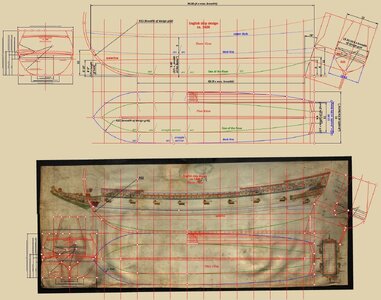
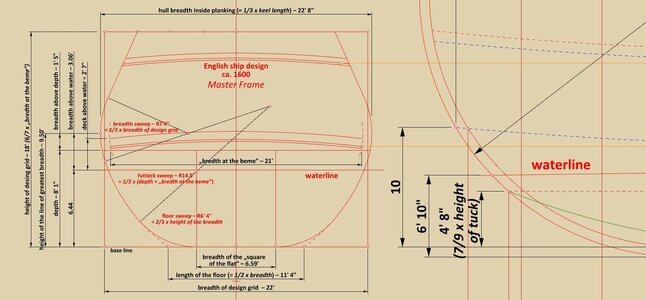
.
Attachments
Last edited:


